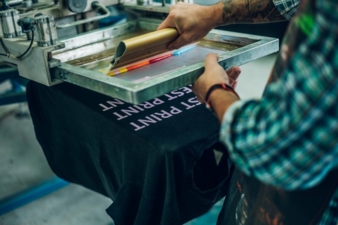29/07/2025 – Textile printing
Digital textile printing are set for rapid growth
Direct-to-garment (DTG) and direct-to-film (DTF) digital textile printing are expected to experience rapid growth, according to a report called “Digital printing direct to fabrics and garments: developments and growth prospects” from Textiles Intelligence.
Digital textile printing allows for unlimited colour choices, customisation, and flexibility in design and production, and it has seen significant advancements in recent years. Such advancements have been driven by improvements in automation, ink formulations and print head technology. The latest digital textile printing machines are extremely flexible and can print on a wide variety of fabrics. Furthermore, many of these machines do not require pre-processing and post-processing equipment or specialist operators. As a result, they are resource-efficient and cost-effective, and their operations have a low impact on the environment.
Companies manufacturing digital textile printing machines include Brother, ColorJet, EFI Reggiani, Epson, Kornit Digital, Mimaki and Sawgrass. DTG and DTF printing are having a profound impact on the industry. DTG printing uses inkjet technology to print high quality, full colour designs directly on to garments while DTF printing uses a polyester film to print bold and durable designs on to a fabric.
These comparatively new digital printing technologies are highly suited to creating designs which are up to the minute and can be provided on demand. As such, designs produced using these technologies are especially suitable for selling via e-commerce platforms, which tend to thrive on rapid turnaround times and diverse product offerings.
Similarly, designs produced using these technologies are also suitable for the fast fashion sector, which relies on quick design iterations and frequent product launches. DTG and DTF printing can meet these requirements by reducing lead times and streamlining production processes. Indeed, DTG and DTF technologies have been developed specifically in response to the expanding needs of e-commerce and fast fashion.
DTF printing, in particular, has been a major phenomenon in recent years. As a result, it is estimated that some 7 bn items were produced worldwide using DTF printing in 2024, and that 50% of all T-shirts now produced globally are decorated using DTF technology. Growth has been driven largely by major investments in China.
To purchase the report, visit https://bit.ly/3Ig30Y0.




